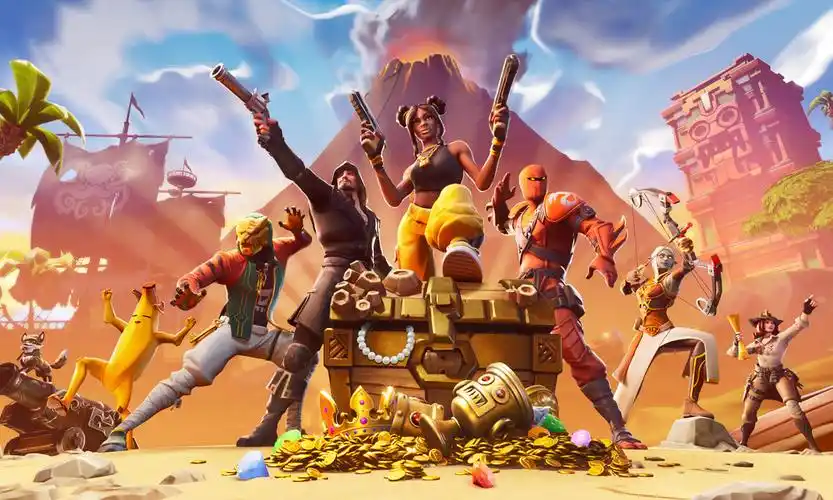How Deep Game News Is Revolutionizing the Gaming Landscape
The gaming industry has undergone a seismic shift over the past decade. From the rise of indie developers to the advent of cloud gaming, the way we play, create, and think about games is constantly evolving. Yet, one of the most transformative, albeit often overlooked, forces is the emergence and maturation of deep game news. This is not the simple reporting of release dates or patch notes; it is a sophisticated ecosystem of analytical journalism, critique, and community-driven discourse that is fundamentally reshaping the gaming experience from a solitary pastime into a rich, interconnected cultural dialogue.

Beyond the Headline: The Anatomy of Deep Game News
Traditional game news has long served a basic function: to inform. It answers the "what," "when," and "where." A new Call of Duty is announced. A Starfield patch fixes 100 bugs. A sequel to a beloved franchise is confirmed.
Deep game news, however, delves into the "why," "how," and "so what?" It is characterized by:
- In-Depth Analysis: Instead of just reporting that a game has a new narrative, deep game news explores its themes, its place within a genre, its commentary on social issues, and its literary or artistic merit. For example, articles dissecting the environmental storytelling in Dark Souls or the socio-political allegories in Deus Ex elevate the conversation.
- Critical Discourse: Moving beyond a simple numerical score, deep criticism involves long-form reviews, video essays, and opinion pieces that contextualize a game within the broader media landscape. It asks not just "Is this game fun?" but "What does this game say, and is it successful in saying it?"
- Developer Insights: Features that go beyond PR speak to explore the creative process, technical challenges, and human stories behind the games. Interviews with narrative designers, audio engineers, and level designers provide players with a newfound appreciation for the craft.
- Community Integration: Deep game news often blurs the line between journalist and community member. It highlights player-generated content, mods, speedrunning achievements, and fan theories, weaving them into the larger narrative of a game’s lifespan.
Transforming the Player Experience: From Consumption to Participation
This shift in gaming journalism has a profound and tangible impact on how players experience games.
1. Enhanced Appreciation and Literacy: Before deep game news, a player might finish BioShock and think, "That was a cool twist." Today, they can read or watch a 45-minute video essay exploring the philosophical underpinnings of Objectivism in Rapture, the meticulous sound design that builds dread, and the meta-commentary on player agency. This doesn't just add context; it teaches players a new language with which to appreciate games. Players become more discerning, understanding the nuances of game design, narrative structure, and artistic direction. The game is no longer just consumed; it is studied and appreciated on multiple levels.
2. The Lengthening of a Game’s Lifespan: A game’s release is no longer its climax; it's the opening act. Deep game news sustains interest and engagement long after the credits roll. A thought-provoking analysis piece or a newly discovered hidden detail can send thousands of players back into a game they thought they had finished. For live-service games and expansive RPGs, this constant stream of deep content—theory-crafting, build analysis, lore deep-dives—is essential fuel for the community, turning a 50-hour experience into a 500-hour obsession.
3. Fostering Inclusive and Informed Communities: By tackling complex issues like representation, labor practices in the industry (e.g., "crunch"), and ethical monetization, deep game news empowers players. It moves discussions beyond fanboyism and platform wars into more meaningful territories. Communities form around specific critics and outlets, creating spaces for informed debate. Players are no longer passive consumers but informed stakeholders who can critique not just the art, but the industry that produces it. This has led to tangible changes, with developers and publishers becoming more responsive to informed, critique-driven feedback.
4. A Guide in an Ocean of Content: The modern gaming landscape is overwhelming. With hundreds of titles releasing on Steam every week and massive backlogs on consoles, choice paralysis is real. While aggregate review scores offer a simplistic filter, deep game news acts as a sophisticated curator. A well-argued critique can illuminate why a small, experimental indie game might be more worthy of a player's time than the latest bloated AAA release. It helps players find games that truly resonate with their tastes on a deeper level, rather than just following marketing hype.
The Ripple Effect on Developers and the Industry
The impact isn't limited to players. The existence of a thriving deep games journalism scene has a significant effect on creators.
- Raised Standards: Developers are aware that their work will be scrutinized beyond its surface-level mechanics. This encourages ambition and attention to detail, knowing that a well-crafted narrative or a innovative game system will be recognized and celebrated by critics and players alike.
- Valuing Artistic Merit: When analysis and critique highlight a game's artistic achievements, it reinforces the idea that games are a legitimate form of cultural expression. This can give developers, especially those in the indie scene, the confidence to pursue personal, quirky, or non-commercial visions.
- Direct Feedback Loop: Deep critiques often provide more useful feedback than any metrics dashboard. A thoughtful article deconstructing a game's flawed third act is a goldmine for a narrative designer planning their next project. The industry engages in a continuous, public dialogue with its most engaged audience.
The Challenges and the Future
This new paradigm is not without its challenges. The economic model for supporting long-form, analytical journalism is precarious. The line between critical analysis and toxic negativity can sometimes blur, and the demand for constant content can lead to burnout for creators.
However, the future is bright. New media formats like podcasts and video essays are perfect vessels for deep analysis. Platforms like Patreon and YouTube memberships allow audiences to directly support the creators they value, fostering a more sustainable ecosystem. As tools for digital storytelling become more accessible, we can expect even more players to become critics, analysts, and participants in this ongoing conversation.
In conclusion, deep game news is far more than a niche for enthusiasts. It is the central nervous system of modern gaming culture. By providing context, fostering critical thinking, and building informed communities, it has transformed gaming from a mere entertainment product into a dynamic, evolving, and deeply participatory art form. The player with a controller in hand is now also a reader, a critic, and a scholar, and their experience is infinitely richer for it.


















